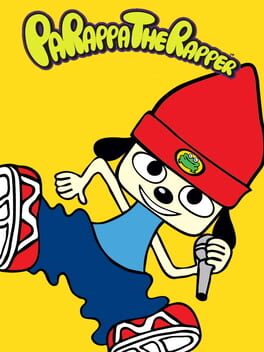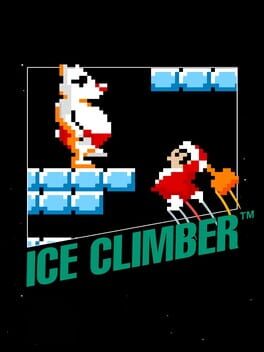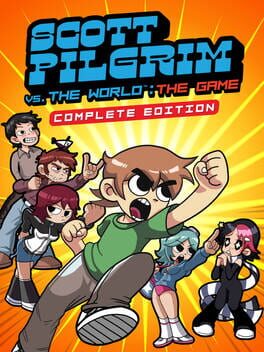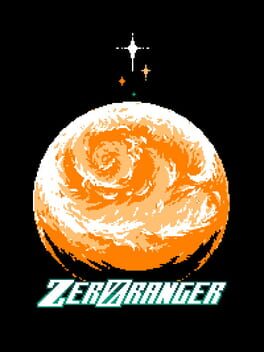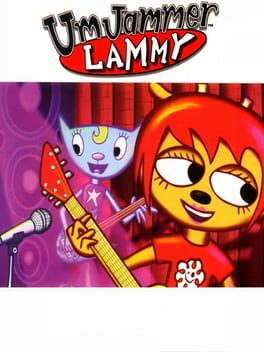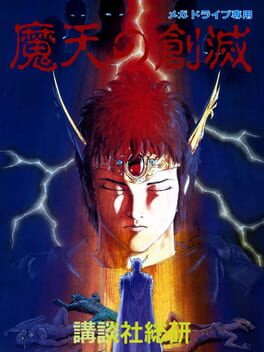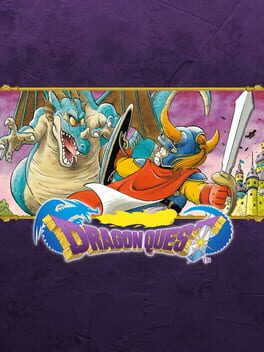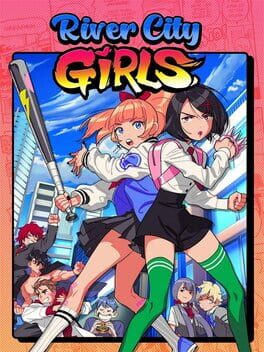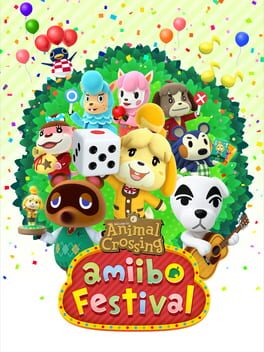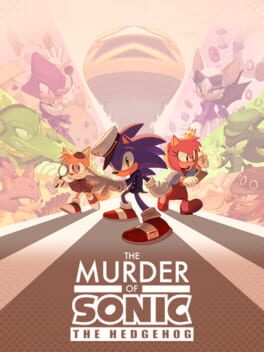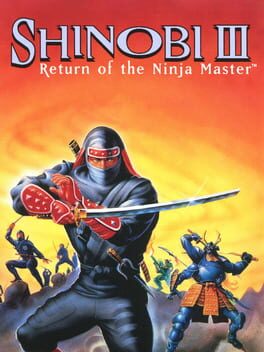MagneticBurn
1996
Can't believe this game has been remastered twice and both versions become progressively more non-functional. I can't even be mad cause like, they birthed a whole-ass genre here. And most 'genre first's still have other adjacent mediums they can draw upon - titans like Doom and Mega Man still had years of arcade and platform shooters to reference. But what mainstream game released from 1996-prior is even somewhat Parappa-shaped? Kudos to nana on sha for such a bold first attempt.
Also, fuck you Jim Ryan and your motherfucking momma
Also, fuck you Jim Ryan and your motherfucking momma
2001
Coming to this after growing up on Pikmin 2 and 3 was harrowing - Pikmin AI is borderline nonfunctional, their capacity to take any initiative without your direct babysitting is obscene. Every enemy encounter is ruthless, something as mundane as a Bulburb can rinse 9-15 of your troops if you do anything less than completely dogpiling it. There's very specific quirks and annoyances that don't even feel like the result of its time, but intentional choices to make the world feel more hostile and out of your control.
But I liked it for that really. You gotta corral the pikmin around as if they were dawdling ankle-biters and you're a begrudging parental figure. Olimar says as much in one of the travel logs. And as any responsible father should, I took immense pride when my dumb idiot gremlins somehow completed their menial labor without falling in a lake.
The Children Yearn For The Mines.
But I liked it for that really. You gotta corral the pikmin around as if they were dawdling ankle-biters and you're a begrudging parental figure. Olimar says as much in one of the travel logs. And as any responsible father should, I took immense pride when my dumb idiot gremlins somehow completed their menial labor without falling in a lake.
The Children Yearn For The Mines.
my Harsh-But-Factually-Correct take is that sonic fan games are basically unplayable by proxy of sonic fans being youtube theorycrafter maniacs with no grasp on actual game design - let alone how to make a good platformer level. and that's fine, cause the real thing is this meticulously-crafted wonderdrug that functions entirely on millions of little gameplay details being laser-sharp and tangentially optimized - and also not giving a fuck in spots where it didn't need to. It's a testament to the classics that even the most dedicated, autism-powered creatives on the internet can't box with the O.G..
But Triple Trouble 16-bit? It comes pretty damn close. For one, the level design is generally solid! Still worse than 2 and 3, and generally too boxy and horizontal for my tastes, but it has that genesis blend of platforming, autopilot and gimmick sections that spring back and forth into each other. It understands and respects that Sonic is both a speed game AND a platform game, and that you should orchestrate a relationship between your character physics and stage design that reflects that. Besides that, it's like, got every fan favorite trimming you'd think of - cutscenes, all the elemental shields and moves, new setpiece moments, CD's [a e s t h e t i c] menus and unlockables - the package speaks for itself, it's very Mania-core.
Music is hit or miss, mostly by way of missing layering on some lead instruments or other midi-flipper shenanigans. Y'know how you can tell when a Genesis song sounds 'flat'? You know it when you hear it - it's missing a fade into vibrato or an echo, and so you hear the same tone for too long and it sounds like bad midi. There's some of that here. The composers all GET how to make good Genesis music, but not like, GREAT music, and you don't get there without sitting your ass down in a real Genny tracker and learning its limitations and deeper features. John Tay's remixes shit on everyone else's contributions because of this, to be brutally honest.
If you're like me and dodged most sonic fan games for not feeling like the originals, this is like, 85% of the way there. Definitely worth your time.
But Triple Trouble 16-bit? It comes pretty damn close. For one, the level design is generally solid! Still worse than 2 and 3, and generally too boxy and horizontal for my tastes, but it has that genesis blend of platforming, autopilot and gimmick sections that spring back and forth into each other. It understands and respects that Sonic is both a speed game AND a platform game, and that you should orchestrate a relationship between your character physics and stage design that reflects that. Besides that, it's like, got every fan favorite trimming you'd think of - cutscenes, all the elemental shields and moves, new setpiece moments, CD's [a e s t h e t i c] menus and unlockables - the package speaks for itself, it's very Mania-core.
Music is hit or miss, mostly by way of missing layering on some lead instruments or other midi-flipper shenanigans. Y'know how you can tell when a Genesis song sounds 'flat'? You know it when you hear it - it's missing a fade into vibrato or an echo, and so you hear the same tone for too long and it sounds like bad midi. There's some of that here. The composers all GET how to make good Genesis music, but not like, GREAT music, and you don't get there without sitting your ass down in a real Genny tracker and learning its limitations and deeper features. John Tay's remixes shit on everyone else's contributions because of this, to be brutally honest.
If you're like me and dodged most sonic fan games for not feeling like the originals, this is like, 85% of the way there. Definitely worth your time.
1985
1998
Sonic's story independently might be the best game in the whole series - near-perfect pacing, back-to-back fantastic level concepts, a thrilling sense of adrenaline, so much joy to be had in the vocal deliveries and iconic lines, and the best video game soundtrack ever performed.
Sonic's friend's stories could be better - not primarily because of the gameplay, but because of the overworld/story padding. They each only get about 15 minutes of gameplay between them, but they all took over an hour each because you're re-watching all these scenes you've already seen. It was really fatiguing fighting Chaos 4 a total of three times (all while Redream fucked up the floor textures and triggered my acrophobia, ewww). But believe me, I do like playing as all of them, one way or another.
I'm not a remake-obsessed guy but if Adventure ever did get revisited, I'd want them to go the extra mile with these other character's stories - change up the dialogue, do more to reflect how they're experiencing these events from their POV, maybe add in more inner-monologue, definitely make the gameplay sections a little meatier and difficult too.
Sonic >>>>>> Amy > Knuckles = E-102 Gamma > Tails >>>>>> Big
The Brainworms Got Me And I Will Absolutely Be Playing Sonic Adventure 2 Again Soon :)
Sonic's friend's stories could be better - not primarily because of the gameplay, but because of the overworld/story padding. They each only get about 15 minutes of gameplay between them, but they all took over an hour each because you're re-watching all these scenes you've already seen. It was really fatiguing fighting Chaos 4 a total of three times (all while Redream fucked up the floor textures and triggered my acrophobia, ewww). But believe me, I do like playing as all of them, one way or another.
I'm not a remake-obsessed guy but if Adventure ever did get revisited, I'd want them to go the extra mile with these other character's stories - change up the dialogue, do more to reflect how they're experiencing these events from their POV, maybe add in more inner-monologue, definitely make the gameplay sections a little meatier and difficult too.
Sonic >>>>>> Amy > Knuckles = E-102 Gamma > Tails >>>>>> Big
The Brainworms Got Me And I Will Absolutely Be Playing Sonic Adventure 2 Again Soon :)
Scott PIlgrim - the iconic beat-em-up revival; the omgzlol gamer reference bonanza; the lost-to-time-for-nostalgia-fomo-profit prodigal son, - is not good!
On single player, anyway.
This is a sucky beat-em-up, but unlike most bad beat-em-ups, I don't think it's because of a lack of developer experience. Most of the time, the weak links in this genre are bad because developers had no interest in designing meaningful mechanics or enemies. It's games like Teenage Mutant Ninja Turtles, X-Men, Altered Beast, Double Dragon and Simpsons that give the medium its unduly reputation as a junkfood button-masher.
Contrarily, Ubi Montreal and select staff had previous beat-em-up experience on GBA Revenge of the Sith: A solid and surprisingly inventive translation of Star Wars' world and rules into a fun, campy run. Being a handheld game, it bears genre modifications catered towards a single-player oriented run. Enemies populate in small numbers and die quickly, but can be individually aggressive and defensive. In turn, Anakin and Obi-Wan's movesets harken moreso to 3D action games, with lots of combination-specific force utilities to apply to different scenarios. There's also more passive differences like stat growth and diminished attack hitboxes. Some of these changes aren't ideal to what people look for in arcade brawlers - and that's fine. But applied to this game's structure and pacing, it fits, bringing few design roadbumps in the way. By all accounts, it's good - and by GBA licensed terms, it's kinda insane.
I bring this up because Scott Pilgrim totally re-uses this game design model - which is fine for its aesthetic elements. Scott PIlgrim has good production, faithfully re-creating the comic's spirit with Paul Robertson's obnoxious-but-fitting pixel chibi style. The trouble is in the 'game'. Scott Pilgrim isn't targeted as a 1-P handheld; it's a 4-P console thing. This leads to a myriad of incompatible mechanics, some being minute oversights while others are total flubs. Everyone has a huge unlockable move pool that amounts to little because enemies block everything and button-mashing is always more optimal damage output. And out of those huge movepools, there's somehow almost no crowd control - fine in RotS's 2-4 enemy waves, but not in 5-10 waves here. Any time you're surrounded on both sides, you're toast. Enemy design overall is too tanky to deal with. If you want to make it through without excess grinding, you gotta block constantly, which just feels like a terrible return on investment in beatemups. It's a killjoy to sit your ass down for 10 seconds, wait for the enemy to whiff often enough, then retaliate with a combo that can't even kill them.
Ironically, bosses were the one consistently good part, since they're usually 1-on-1 and have very readable patterns supported by fun gimmicks. Scott's overwrought, tacky design language is at its most creative here, and the fights actually got me kinda tense. This is clearly where their RotS experience paid off the most - doubly-ironic considering that RotS's bosses use a separate, close-quarters-locked combat structure.
Oh and River City Ransom's RPG shop progression is here in a linear game with dedicated stage setpieces and it feels extremely bad to engage with. Grinding gets old quick and too much important tech is locked behind it. It's fine in RPG's where things are low-key and optimized around contextually-repeated steps, but not in a game where levels have designated point-A-to-point-B design with tons of stage gimmicks between.
But the worst part? Menu-ing through the shops is really awkward and has tons of automated pauses. A single transaction takes like, 10x longer than it should. How.
I'm sure all these points would be mitigated when played with a group, though that introduces a bigger critique: A beat-em-up shouldn't use co-op as a mean's end to balance problems. Friends or not doesn't change the fact that everyone magically has a 3-page Tekken movelist they'll scarcely use, and it certainly doesn't fix enemies dealing 25 damage off of basic combos. I get it's probably too hard to make 1 campaign that suits solo AND co-op evenly - but hey, the good classics figured out how to do it 2 decades ago.
I don't imagine myself replaying this soon - if anything, I'm more curious about re-visitng RotS. What I am looking forward to, though, is when Jenny plays this a million bajillion years from now and gives it 4 stars.
On single player, anyway.
This is a sucky beat-em-up, but unlike most bad beat-em-ups, I don't think it's because of a lack of developer experience. Most of the time, the weak links in this genre are bad because developers had no interest in designing meaningful mechanics or enemies. It's games like Teenage Mutant Ninja Turtles, X-Men, Altered Beast, Double Dragon and Simpsons that give the medium its unduly reputation as a junkfood button-masher.
Contrarily, Ubi Montreal and select staff had previous beat-em-up experience on GBA Revenge of the Sith: A solid and surprisingly inventive translation of Star Wars' world and rules into a fun, campy run. Being a handheld game, it bears genre modifications catered towards a single-player oriented run. Enemies populate in small numbers and die quickly, but can be individually aggressive and defensive. In turn, Anakin and Obi-Wan's movesets harken moreso to 3D action games, with lots of combination-specific force utilities to apply to different scenarios. There's also more passive differences like stat growth and diminished attack hitboxes. Some of these changes aren't ideal to what people look for in arcade brawlers - and that's fine. But applied to this game's structure and pacing, it fits, bringing few design roadbumps in the way. By all accounts, it's good - and by GBA licensed terms, it's kinda insane.
I bring this up because Scott Pilgrim totally re-uses this game design model - which is fine for its aesthetic elements. Scott PIlgrim has good production, faithfully re-creating the comic's spirit with Paul Robertson's obnoxious-but-fitting pixel chibi style. The trouble is in the 'game'. Scott Pilgrim isn't targeted as a 1-P handheld; it's a 4-P console thing. This leads to a myriad of incompatible mechanics, some being minute oversights while others are total flubs. Everyone has a huge unlockable move pool that amounts to little because enemies block everything and button-mashing is always more optimal damage output. And out of those huge movepools, there's somehow almost no crowd control - fine in RotS's 2-4 enemy waves, but not in 5-10 waves here. Any time you're surrounded on both sides, you're toast. Enemy design overall is too tanky to deal with. If you want to make it through without excess grinding, you gotta block constantly, which just feels like a terrible return on investment in beatemups. It's a killjoy to sit your ass down for 10 seconds, wait for the enemy to whiff often enough, then retaliate with a combo that can't even kill them.
Ironically, bosses were the one consistently good part, since they're usually 1-on-1 and have very readable patterns supported by fun gimmicks. Scott's overwrought, tacky design language is at its most creative here, and the fights actually got me kinda tense. This is clearly where their RotS experience paid off the most - doubly-ironic considering that RotS's bosses use a separate, close-quarters-locked combat structure.
Oh and River City Ransom's RPG shop progression is here in a linear game with dedicated stage setpieces and it feels extremely bad to engage with. Grinding gets old quick and too much important tech is locked behind it. It's fine in RPG's where things are low-key and optimized around contextually-repeated steps, but not in a game where levels have designated point-A-to-point-B design with tons of stage gimmicks between.
But the worst part? Menu-ing through the shops is really awkward and has tons of automated pauses. A single transaction takes like, 10x longer than it should. How.
I'm sure all these points would be mitigated when played with a group, though that introduces a bigger critique: A beat-em-up shouldn't use co-op as a mean's end to balance problems. Friends or not doesn't change the fact that everyone magically has a 3-page Tekken movelist they'll scarcely use, and it certainly doesn't fix enemies dealing 25 damage off of basic combos. I get it's probably too hard to make 1 campaign that suits solo AND co-op evenly - but hey, the good classics figured out how to do it 2 decades ago.
I don't imagine myself replaying this soon - if anything, I'm more curious about re-visitng RotS. What I am looking forward to, though, is when Jenny plays this a million bajillion years from now and gives it 4 stars.
2018
1999
1993
Psychotic. Cartoonishly malicious. Unbalanced to a degree so comedic it has to be seen to be believed. Equitably unplayable.
Take everything you know about disfavorable JRPG gameplay tropes - grinding, high encounter rates, low cash from enemy encounters, poor attack accuracy rates, the nine yards. Ok ok, you have an image of kusoge in your head, some real piece of work from an 'obscure japanese 16-bit games' playlist, y'know? Ok now, you think maybe it's not so bad and you can just grind through the adventure right? Tick on fast-forward, mill some hours on the weaker enemies until you're 5-10 above the leveling curve, y'know? Well joke's on you ya fucking loser, ya bum, ya dipshit, this game has ANTI-GRIND. When you over-level the enemies in a certain zone, they disappear FOREVER. PERMANENTLY. There were two occasions where I thought I got soft-locked
And the enemies, ooohhhohohohoh hey y'know how the damage in Shining Force is calculated with a super-basic Attack - Defense + Randomization function? It's kinda looney, and leads to a lot of encounters where a normally-powerful mage or preist can only deal 1 damage at a time, yeah? But it's not a dealbreaker cause you got like, 12 teammates with a huge variance of Attack stats, access to magic attacks, and the values are low enough that the game never deviates the numbers too wildly ye? It's like Paper Mario in a way, keeping everything smalls means each numerical displacement is that much more impactful. Now put that system into an RPG where ATK/DEF values start in the 100's, and offensive magic isn't easily accessible until the 5-10 hour mark. You're left with a game where attacks are ALWAYS dealing near-lethal damage, or doing literally nothing. No in-between whatsoever. Yes this applies to the enemies. The first encounters you meet deal 20% of your healthbar. Enemies as soon as the second area can OHKO you. This continues for the entire rest of the game. No JRPG has taken 'kill or be killed' so literally. You are never safe. You are never secure.
So why was this still fun to play for those initial 20 hours? Why the fuck would any human burn 20 hours into an RPG as sadistic as that??
First off, menu navigation is OBSCENELY fast. There's no downtime spent on battle animations, elaborate UX transitions, or any other nonsense. The run speed is at least twice as fast as every other peer in its field. There's no barrier between you and the game environment, which not only makes it a satisfying grind, but helps alleviate the initial shock of the bullish difficulty. Yeah, it sucks to die, but you get back up on your feet almost immediately, it's like 4 clicks and 10 seconds to jump back into the fray.
Second off, Maten no Soumetsu's bullshit is consistent. From frame 1, the game has you at knifepoint, and only continues to get more obscene. If this were a modestly-difficult game with a smattering of difficulty hills scattered about, the sense of progression would constantly come to a screeching halt. But the bullshit IS the flow. Every time you beat a major boss or peak the leveling cap in an area, you feel like you've overcome a herculean task. The achievement is in the constant uphill battle and brief moments of reprieve. Suffocation and exasperation in a pseudo-sexual cycle. Beautiful.
There's also this general vibe of early-2000's transportation going on here, there's basically NO coverage of this game whatsoever on the entire internet. I found 1 let's play on youtube with minimal commentary, 1 graphic for the early-game grind made by the fan translator, a Twitch stream by a V-tuber, and that was IT. When was the last time you played a game where you were truly in the dark, as uninformed and isolated as when you were a kid in a pre-internet era? That stumbling, that fighting, that constant struggle to make any progress whatsoever felt... so goddamn rewarding, in a way no game's made me feel in the last couple years. Mix that with the somewhat plain overworld artstyle, the infrequent meme inserts and 2000's lingo drops ('thirsty', 'sausage-fest', etc), and it all summates to feel like a weird obscure RPGmaker project by a detached highschooler. Bland on the outside, maxing the Scoville on the inside.
But I had to drop it one way or another because at some point, I realized I needed to reclaim my life. No matter how gratifying it was to dig through this, to be one of the few to make this much progress on such a relatively unknown game, I was getting such diminishing returns on the experience and kept taking myself away from other games I'd rather play. The initial impact of 'damn, I'm actually making progress' wanes a bit with each new thing the game throws at you, and when I reached the point where enemies were throwing out spell-blockers and AOE while out-speeding me (and no shops had speed-up equipment to buy), I keeled over. Even with save states, I wasn't strong enough to overcome these troubled waters.
I'd love to revisit this if anyone somehow makes a patch to improve the EXP/gold rate. You could go beyond and fix all the other problems with internal logic, but if you took away the bullshit, you admittedly wouldn't be left with much. Just fix the EXP, just triple/quadruple what you get to cut that runtime down to something more palatable. There's not much to see and do in Maten No Soumetsu's sparse overworld and bite-sized dungeons, especially when comparing it to other 1993 JRPG's. Its scope is comparable to an NES Dragon Quest, debatably smaller in some respects. So to the MD romhacker reading this, uh, let me grind on enemies I out-leveled, and give me 3x EXP and money, and I will give you one hundren million dollars, in cash, annually.
I'll be back someday, you vile creature, you
Take everything you know about disfavorable JRPG gameplay tropes - grinding, high encounter rates, low cash from enemy encounters, poor attack accuracy rates, the nine yards. Ok ok, you have an image of kusoge in your head, some real piece of work from an 'obscure japanese 16-bit games' playlist, y'know? Ok now, you think maybe it's not so bad and you can just grind through the adventure right? Tick on fast-forward, mill some hours on the weaker enemies until you're 5-10 above the leveling curve, y'know? Well joke's on you ya fucking loser, ya bum, ya dipshit, this game has ANTI-GRIND. When you over-level the enemies in a certain zone, they disappear FOREVER. PERMANENTLY. There were two occasions where I thought I got soft-locked
And the enemies, ooohhhohohohoh hey y'know how the damage in Shining Force is calculated with a super-basic Attack - Defense + Randomization function? It's kinda looney, and leads to a lot of encounters where a normally-powerful mage or preist can only deal 1 damage at a time, yeah? But it's not a dealbreaker cause you got like, 12 teammates with a huge variance of Attack stats, access to magic attacks, and the values are low enough that the game never deviates the numbers too wildly ye? It's like Paper Mario in a way, keeping everything smalls means each numerical displacement is that much more impactful. Now put that system into an RPG where ATK/DEF values start in the 100's, and offensive magic isn't easily accessible until the 5-10 hour mark. You're left with a game where attacks are ALWAYS dealing near-lethal damage, or doing literally nothing. No in-between whatsoever. Yes this applies to the enemies. The first encounters you meet deal 20% of your healthbar. Enemies as soon as the second area can OHKO you. This continues for the entire rest of the game. No JRPG has taken 'kill or be killed' so literally. You are never safe. You are never secure.
So why was this still fun to play for those initial 20 hours? Why the fuck would any human burn 20 hours into an RPG as sadistic as that??
First off, menu navigation is OBSCENELY fast. There's no downtime spent on battle animations, elaborate UX transitions, or any other nonsense. The run speed is at least twice as fast as every other peer in its field. There's no barrier between you and the game environment, which not only makes it a satisfying grind, but helps alleviate the initial shock of the bullish difficulty. Yeah, it sucks to die, but you get back up on your feet almost immediately, it's like 4 clicks and 10 seconds to jump back into the fray.
Second off, Maten no Soumetsu's bullshit is consistent. From frame 1, the game has you at knifepoint, and only continues to get more obscene. If this were a modestly-difficult game with a smattering of difficulty hills scattered about, the sense of progression would constantly come to a screeching halt. But the bullshit IS the flow. Every time you beat a major boss or peak the leveling cap in an area, you feel like you've overcome a herculean task. The achievement is in the constant uphill battle and brief moments of reprieve. Suffocation and exasperation in a pseudo-sexual cycle. Beautiful.
There's also this general vibe of early-2000's transportation going on here, there's basically NO coverage of this game whatsoever on the entire internet. I found 1 let's play on youtube with minimal commentary, 1 graphic for the early-game grind made by the fan translator, a Twitch stream by a V-tuber, and that was IT. When was the last time you played a game where you were truly in the dark, as uninformed and isolated as when you were a kid in a pre-internet era? That stumbling, that fighting, that constant struggle to make any progress whatsoever felt... so goddamn rewarding, in a way no game's made me feel in the last couple years. Mix that with the somewhat plain overworld artstyle, the infrequent meme inserts and 2000's lingo drops ('thirsty', 'sausage-fest', etc), and it all summates to feel like a weird obscure RPGmaker project by a detached highschooler. Bland on the outside, maxing the Scoville on the inside.
But I had to drop it one way or another because at some point, I realized I needed to reclaim my life. No matter how gratifying it was to dig through this, to be one of the few to make this much progress on such a relatively unknown game, I was getting such diminishing returns on the experience and kept taking myself away from other games I'd rather play. The initial impact of 'damn, I'm actually making progress' wanes a bit with each new thing the game throws at you, and when I reached the point where enemies were throwing out spell-blockers and AOE while out-speeding me (and no shops had speed-up equipment to buy), I keeled over. Even with save states, I wasn't strong enough to overcome these troubled waters.
I'd love to revisit this if anyone somehow makes a patch to improve the EXP/gold rate. You could go beyond and fix all the other problems with internal logic, but if you took away the bullshit, you admittedly wouldn't be left with much. Just fix the EXP, just triple/quadruple what you get to cut that runtime down to something more palatable. There's not much to see and do in Maten No Soumetsu's sparse overworld and bite-sized dungeons, especially when comparing it to other 1993 JRPG's. Its scope is comparable to an NES Dragon Quest, debatably smaller in some respects. So to the MD romhacker reading this, uh, let me grind on enemies I out-leveled, and give me 3x EXP and money, and I will give you one hundren million dollars, in cash, annually.
I'll be back someday, you vile creature, you
2004
I've always wanted to soak my feet into jrpgs. I've played a nice handful of RPG's, but they were always games that I was drawn to for their non-RPG mechanics or alternative design conventions. Y'know, the stuff like Kingdom Hearts, Mega Man Battle Network and Star Force, Paper Mario, Undertale and Deltarune, TWEWY - the kinds of RPG's that twitter minors always include in their 'YOU'RE one of the good ones' posts. The closest to classical, traditional RPG's I ever got into were the Shining Force series and Phantasy Star IV - both of which I only got into because of my Genesis ADHD. But hey, I loved both! Even besides the narrative and aesthetic strengths of each, I was super into the simple loop of building up your squad, then going aggro on a bunch of badass monsters. And I learned from my experiences with both that surprisingly, I kinda like grinding and a lot of the other little things that people associate negatively with the genre.
So why didn't I start getting into 'the classics' of RPG's 'til now? Cause like the entire rest of my generation, I started with all of Square's big-name games and bounced off of them HAAAAAAAAAAARD. Chrono Trigger had me hooked in the first half, but left me drained by the second half when its boss design and open-endedness went in a direction that put me off immediately. I played part of FF9 and was in love, but got slowly worn out from its sluggish, 20FPS combat. I played Super Mario RPG on Wii VC cause it had Mario in it, and while I like a lot of the things it DOES, its combat was always just a less-refined Paper Mario to me, and the rough edges, dirty color palette and bad platforming pushed me off too. The only classic Square game that I was really vibing with was FF7, which I liked for the 10-15 hours of it I played! But one thing led to another, my life got busy, I got stuck somewhere, gave it up, and never looked back. I could understand the majesty and hype behind all of these games that made them genre-defining classics, but I could never get 'deep' into them. They didn't have that basic, snappy feel that made me get saturated in Shining and Phantasy Star.
Honestly, even though JRPG haters are unreasonable bitches, I wouldn't really blame them for saying stuff like Paper Mario and Persona 'got it right' when the whole internet screams to start with the big Squaresoft names - which again, aren't bad, but understandably don't appeal to everyone. Active Time Battles fucking suck dude, I get why it's a fresh change of pace for people who are FF junkies but goddamn this shit is rancid.
So instead of picking up and dropping more FF, I pivoted the other way and tried Dragon Quest for the time being. And Dragon Quest kicks ass! The leveling feels great! The feeling of branching out and surviving through each patch of the kingdom while scraping to get back to an inn or the castle before expiring is handled extremely well! And when you start getting magic that lets you minimize the busywork of items, you feel awesome! Toriyama, for as much of an asshole as he is, breathed a ton of life into the monster designs and lets them speak to the world in a way the microscopic overworld sprites couldn't. I really appreciate how the first enemies you fight are wildlife like roaming bugs and shit, but as you progress, you take on more and more of Dragonlord's direct henchmen - they're not just random encounters, these dudes are on patrol and you got on their TURF. When you finally grind up to beat the Green Dragon, and then you get to the final dungeon and TWO more variants of it appear as COMMON ENEMIES?? That's top tier kino.
Anyway this game's great, all of its design choices are laser-focused around that thrill of adventuring in a lived-in world and slowly building yourself up. Antiquated in some spots, but it gets the gameplay loop down pat and must've been even crazier back then. This was the 'hit buttons' JRPG thrill I needed to get my feet warm into the genre and rinse the taste of ATB out of my mouth.
Mobile/Switch version is ugly as shit tho, fuckin' Minecraft mod vibes.
So why didn't I start getting into 'the classics' of RPG's 'til now? Cause like the entire rest of my generation, I started with all of Square's big-name games and bounced off of them HAAAAAAAAAAARD. Chrono Trigger had me hooked in the first half, but left me drained by the second half when its boss design and open-endedness went in a direction that put me off immediately. I played part of FF9 and was in love, but got slowly worn out from its sluggish, 20FPS combat. I played Super Mario RPG on Wii VC cause it had Mario in it, and while I like a lot of the things it DOES, its combat was always just a less-refined Paper Mario to me, and the rough edges, dirty color palette and bad platforming pushed me off too. The only classic Square game that I was really vibing with was FF7, which I liked for the 10-15 hours of it I played! But one thing led to another, my life got busy, I got stuck somewhere, gave it up, and never looked back. I could understand the majesty and hype behind all of these games that made them genre-defining classics, but I could never get 'deep' into them. They didn't have that basic, snappy feel that made me get saturated in Shining and Phantasy Star.
Honestly, even though JRPG haters are unreasonable bitches, I wouldn't really blame them for saying stuff like Paper Mario and Persona 'got it right' when the whole internet screams to start with the big Squaresoft names - which again, aren't bad, but understandably don't appeal to everyone. Active Time Battles fucking suck dude, I get why it's a fresh change of pace for people who are FF junkies but goddamn this shit is rancid.
So instead of picking up and dropping more FF, I pivoted the other way and tried Dragon Quest for the time being. And Dragon Quest kicks ass! The leveling feels great! The feeling of branching out and surviving through each patch of the kingdom while scraping to get back to an inn or the castle before expiring is handled extremely well! And when you start getting magic that lets you minimize the busywork of items, you feel awesome! Toriyama, for as much of an asshole as he is, breathed a ton of life into the monster designs and lets them speak to the world in a way the microscopic overworld sprites couldn't. I really appreciate how the first enemies you fight are wildlife like roaming bugs and shit, but as you progress, you take on more and more of Dragonlord's direct henchmen - they're not just random encounters, these dudes are on patrol and you got on their TURF. When you finally grind up to beat the Green Dragon, and then you get to the final dungeon and TWO more variants of it appear as COMMON ENEMIES?? That's top tier kino.
Anyway this game's great, all of its design choices are laser-focused around that thrill of adventuring in a lived-in world and slowly building yourself up. Antiquated in some spots, but it gets the gameplay loop down pat and must've been even crazier back then. This was the 'hit buttons' JRPG thrill I needed to get my feet warm into the genre and rinse the taste of ATB out of my mouth.
Mobile/Switch version is ugly as shit tho, fuckin' Minecraft mod vibes.
2019
This review contains spoilers
I don't like feeling cynical towards games when I could invest time in more positive things, but River City Girls is twitterbait. I don't mean that out of pessimism or a weird anti-SJW way. It is a game orchestrated to cater to the in-crowds and hype circles of social media. It has nutty combo strings for DMC and FGC meatheads to share; callouts to Double Dragon, RCR and lolrandom gamer humor to get retro crowds in; pastel-neon 80's cityscapes filled with quirky shopkeeps and boba tea-adjacent wares for fashionistas and 'wow-so-aesthetic'-heads; celebrity Youtuber and VA cameos; smooth-chibi pixel art for artists and sakuga addicts to squeal over; really questionable ephebophilic touches that are synonymous with WayForward's transparently sexploitative side.
It's a game meant to appeal to several terminally online crowds - some good, some bad. With exception to a few scenarios, I can't find fault in developers and creative leads building a project that min/maxes appeal while staying true to a consistent vibe and vision. Devs gotta eat: You can't let your comrades starve because making a desirable project is 'cringe' or 'weak' in the eyes of a nebulous, journalistic ego.
But it's bad and I don't like the ways it's bad so I get total dibs on being mean to it, tee hee!
RCG is a Scott Pilgrim clone. Scott Pilgrim - by way of beat-em-ups, - is reeeeally bad (mandatory reading). RCG is thankfully a better-feeling game than SP, and its RPG structure carried over from the main Kunio-kun games makes more sense for this style of combat and player growth. Except that RCG is still bad on a scenario and encounter design standpoint - and oddly, it blows as an RPG, too. Stats gained from leveling up are mostly worthless because enemies scale with your level, too. You have to invest money in food items (as tradition from kunio and scott) to get buffs that will actually improve your odds above enemies. But shit is expensive in this game; you get hardly any money for how long it takes to beat guys. Instead, large cash sums are doled out after major events and bosses. You can't grind at your own pace; you have to wait until the game lets you empower yourself, undermining the point. Even Scott Pilgrim - a game that put grinding in a linear gameloop, - understood that leveling up in quantifiable chunks feels satisfying. And the money you get from these objectives is overkill too: Once you get a little past halfway, you have enough money to buy basically everything. Combat does become more fun with progression as your speed and movepool grows, but enemies also gain insane HP boosts as you go. The thrill of pulling off successful combo strings feels sorely diminished when end-game enemies tank 4 full volleys before dying, only to drop 3 bucks and negligible EXP.
And even though RCG is a better feeling game than Scott, it still has that ball-and-chain sense of weight dragging it down. Everyone stays knocked down for so long, enemies basically always beat out your priority on clashing attacks, while blocking out most incoming threats. At a certain point, I was mostly spamming dashing and jumping Heavies just so I could clear waves without risk of randomly getting pummeled - but it's not like there's much threat for dying anyway, since you spawn in the same area you left off with a little less money. It's just a matter of wasting time so you can avoid wasting marginally more time.
Bosses are a total embarrassment. Nintendo bosses don't belong in beat-em-ups. Even Scott had good bosses. End paragraph.
The one part that most of the internet dislikes - the normal ending, - felt lukewarm to me, because it's not like the plot leading up to its twist has anything going for it worth tarnishing. I was floored how much of the overarching conflict goes 'kyoko/misako look for kunio/riki -> kyoko/misako meets sex pest -> kyoko/misako demand info from sex pest -> sex pest demands task/fight before info -> sex pest admits they have no info'. There's no weight to this gamble, and none of the flavor text or dialogue spruces it up: It's 'lolawkward' quips and whedonisms for days. Honestly? I think the funniest bit this game's story has is that you spend the whole game beating up dumb incels, only to realize kyoko and Misako are equally dumb incels. (Guess more of this was scott pilgrim influenced than gameplay lmao). I think they should've kept that angle instead of retconning it through the secret ending and sequel.
I gotta be somewhat nice to RCG so I will say that the spritework here might be a top 10 for me, it's really fucking smooth. It's a flat, cel-shaded, blocky style of animation with cubical body frames and chunky appendages that feels totally perfect for belt-scroll knuckledusting. It's definitely too good to a fault tho, as all the expensive animation means the enemy roster is pitifully small and starts repeating as early as the main town areas. Alternate palette enemies don't even have many differences from each other, so it can't even fake variety the way footclan soldiers and yellow signals of old can. I'm stunned you could draw 500 whole frames for this one enemy type, but... did you need to? Do you see what a design inconvenience that can be?
Even though I got some fleeting dope highs from RCG, I felt totally exasperated by it in a way I hadn't felt in years. Where SP at least feels like a well-intentioned project that got caught up in unusual ambitions and clashing systems, RCG feels unambiguously corporate and petty: A surface-level understanding of beatemups and action titles, hidden by videogameisms and trend-chasing. SP was excusable in 2010 amidst a total drought of meaningfully-stylish projects, but RCG in 2019 released too close to SoR4 and several other action gigs; it feels like limp bait. It has passionate work put into it, but was clearly assembled and marketed with visions of golden geese.
It's a game meant to appeal to several terminally online crowds - some good, some bad. With exception to a few scenarios, I can't find fault in developers and creative leads building a project that min/maxes appeal while staying true to a consistent vibe and vision. Devs gotta eat: You can't let your comrades starve because making a desirable project is 'cringe' or 'weak' in the eyes of a nebulous, journalistic ego.
But it's bad and I don't like the ways it's bad so I get total dibs on being mean to it, tee hee!
RCG is a Scott Pilgrim clone. Scott Pilgrim - by way of beat-em-ups, - is reeeeally bad (mandatory reading). RCG is thankfully a better-feeling game than SP, and its RPG structure carried over from the main Kunio-kun games makes more sense for this style of combat and player growth. Except that RCG is still bad on a scenario and encounter design standpoint - and oddly, it blows as an RPG, too. Stats gained from leveling up are mostly worthless because enemies scale with your level, too. You have to invest money in food items (as tradition from kunio and scott) to get buffs that will actually improve your odds above enemies. But shit is expensive in this game; you get hardly any money for how long it takes to beat guys. Instead, large cash sums are doled out after major events and bosses. You can't grind at your own pace; you have to wait until the game lets you empower yourself, undermining the point. Even Scott Pilgrim - a game that put grinding in a linear gameloop, - understood that leveling up in quantifiable chunks feels satisfying. And the money you get from these objectives is overkill too: Once you get a little past halfway, you have enough money to buy basically everything. Combat does become more fun with progression as your speed and movepool grows, but enemies also gain insane HP boosts as you go. The thrill of pulling off successful combo strings feels sorely diminished when end-game enemies tank 4 full volleys before dying, only to drop 3 bucks and negligible EXP.
And even though RCG is a better feeling game than Scott, it still has that ball-and-chain sense of weight dragging it down. Everyone stays knocked down for so long, enemies basically always beat out your priority on clashing attacks, while blocking out most incoming threats. At a certain point, I was mostly spamming dashing and jumping Heavies just so I could clear waves without risk of randomly getting pummeled - but it's not like there's much threat for dying anyway, since you spawn in the same area you left off with a little less money. It's just a matter of wasting time so you can avoid wasting marginally more time.
Bosses are a total embarrassment. Nintendo bosses don't belong in beat-em-ups. Even Scott had good bosses. End paragraph.
The one part that most of the internet dislikes - the normal ending, - felt lukewarm to me, because it's not like the plot leading up to its twist has anything going for it worth tarnishing. I was floored how much of the overarching conflict goes 'kyoko/misako look for kunio/riki -> kyoko/misako meets sex pest -> kyoko/misako demand info from sex pest -> sex pest demands task/fight before info -> sex pest admits they have no info'. There's no weight to this gamble, and none of the flavor text or dialogue spruces it up: It's 'lolawkward' quips and whedonisms for days. Honestly? I think the funniest bit this game's story has is that you spend the whole game beating up dumb incels, only to realize kyoko and Misako are equally dumb incels. (Guess more of this was scott pilgrim influenced than gameplay lmao). I think they should've kept that angle instead of retconning it through the secret ending and sequel.
I gotta be somewhat nice to RCG so I will say that the spritework here might be a top 10 for me, it's really fucking smooth. It's a flat, cel-shaded, blocky style of animation with cubical body frames and chunky appendages that feels totally perfect for belt-scroll knuckledusting. It's definitely too good to a fault tho, as all the expensive animation means the enemy roster is pitifully small and starts repeating as early as the main town areas. Alternate palette enemies don't even have many differences from each other, so it can't even fake variety the way footclan soldiers and yellow signals of old can. I'm stunned you could draw 500 whole frames for this one enemy type, but... did you need to? Do you see what a design inconvenience that can be?
Even though I got some fleeting dope highs from RCG, I felt totally exasperated by it in a way I hadn't felt in years. Where SP at least feels like a well-intentioned project that got caught up in unusual ambitions and clashing systems, RCG feels unambiguously corporate and petty: A surface-level understanding of beatemups and action titles, hidden by videogameisms and trend-chasing. SP was excusable in 2010 amidst a total drought of meaningfully-stylish projects, but RCG in 2019 released too close to SoR4 and several other action gigs; it feels like limp bait. It has passionate work put into it, but was clearly assembled and marketed with visions of golden geese.
2009
You ever play an action game and notice yourself mashing your moves out even though you know they have cooldowns between them? It's kind of a gut reaction and a self-fulfilling mishap: You mash to psychologically get yourself out of a tough situation, and that chaotic movement only further hurts you. Quicksand.
But Shinobi's a game about overcoming mashing instincts - sometimes by force. The original and Shadow Dancer both give you a single lifepoint to make it through - you can't aggro your way through things. Try it and take a fussless curbstomp. They're like Elevator Action and Rolling Thunder's brand of 'gunning-but-not-running' action, where you have to plan your moves ahead and commit to risky endeavors - reflexes are natural parts of surviving them, but without anticipation and timing, you're deadmeat. Revenge of Shinobi carried these philosophies into a larger scope with increased toolkits and platforming, while making healthbars more forgiving to compensate. But the tradeoff was a half-step ahead and feels uncomfortably transitional. Speaking for myself, when I play RoS, I want to play reactively, but I get fucked over. It's things like the slow horizontal movement, the uncomfortable timing on the double-jump, Musashi's chunky attack options, etc. I have tools that make feel like I should be able to rush ahead, but I feel like the designers still intend you to sit back and plan ahead. It doesn't feel complementary or satisfying; I feel underwhelmed playing slow, and underpowered playing fast. And when my patience gets tested, I button-mash.
III is cool because it refines what RoS brings to the table while iterating further. It has a very rhythmic pace to movement. There's still odd control discrepancies, but here they feel like intentional paramaters for encouraging thoughtful play. Mastering the timing of the double-jump, the angle and rebound of the divekick, the dash attack and laser-sharp kunai throws - these become drum-like beats to the rhythm and lead of your playstyle. It works perfectly for III's difficulty curve: A surprisingly comfortable game until the last bits, but that gives you space to develop your movement language and flow - and on return playthroughs, you feel like you're swimming. Every move you make is a matter of instinct but ultimately-calculated - and when you catch yourself mashing, that's when you know you're getting ahead of yourself. Airtime is floaty but punctuated through sharp divekicks, and it's really addicting to bop from one enemy to another. My favorite stages were around the midsection of the game where you have to time your walljumps - and by surprise, I was pretty fond about stage 7-2. I think having an all-platforming section to capstone the game is kinda brilliant - like an exercise of self-discipline before a final confrontation.
The part before that though, 7-1? Fucking abominable. I hate having to navigate under the jet exhausts. And don't get me started on 6-2's maze shenanigans and the dumbass kabuki boss.
Shinobi III is also just really fucking badass. It doesn't have the movie parody bosses or the Yuzo Koshiro music, but it owns itself and does so many cool things with the stage setpieces, bosses and music. You fight mechas on a surfboard while this song plays. 'Need I say more' is an easy throwaway, but like, dude - literally. Seriously. Fergaliciously.
Ok actually, one thing that makes the art especially cool? The use of soft grey gradients and shadows. Shinobi's never been a 'vivid' game visually, there's much to parse taken as-is on HD displays, but on CRT? Absolutely killer. Maybe the biggest facelift any game has ever gotten from CRT filtering. Everything blends like paint and has so much depth to it. When that first stage hits you and you see the parallax trees with the sun casting rays against them? Unbeatable.
Best of the Shinobi works and a loud-and-proud Genesis killer app. It's that rare 16-bit magic where everything feels organic, simple, and aggressively satisfying, up there with SoR2 and Phantasy Star IV for doing everything right where it counts. Props to RoS for laying the groundwork, but uh, when people say that game's better than III? Total buffoonery. Moron-pilled and poop-shitted. Go to jail. Re-evaluate yourself. Do better.
But Shinobi's a game about overcoming mashing instincts - sometimes by force. The original and Shadow Dancer both give you a single lifepoint to make it through - you can't aggro your way through things. Try it and take a fussless curbstomp. They're like Elevator Action and Rolling Thunder's brand of 'gunning-but-not-running' action, where you have to plan your moves ahead and commit to risky endeavors - reflexes are natural parts of surviving them, but without anticipation and timing, you're deadmeat. Revenge of Shinobi carried these philosophies into a larger scope with increased toolkits and platforming, while making healthbars more forgiving to compensate. But the tradeoff was a half-step ahead and feels uncomfortably transitional. Speaking for myself, when I play RoS, I want to play reactively, but I get fucked over. It's things like the slow horizontal movement, the uncomfortable timing on the double-jump, Musashi's chunky attack options, etc. I have tools that make feel like I should be able to rush ahead, but I feel like the designers still intend you to sit back and plan ahead. It doesn't feel complementary or satisfying; I feel underwhelmed playing slow, and underpowered playing fast. And when my patience gets tested, I button-mash.
III is cool because it refines what RoS brings to the table while iterating further. It has a very rhythmic pace to movement. There's still odd control discrepancies, but here they feel like intentional paramaters for encouraging thoughtful play. Mastering the timing of the double-jump, the angle and rebound of the divekick, the dash attack and laser-sharp kunai throws - these become drum-like beats to the rhythm and lead of your playstyle. It works perfectly for III's difficulty curve: A surprisingly comfortable game until the last bits, but that gives you space to develop your movement language and flow - and on return playthroughs, you feel like you're swimming. Every move you make is a matter of instinct but ultimately-calculated - and when you catch yourself mashing, that's when you know you're getting ahead of yourself. Airtime is floaty but punctuated through sharp divekicks, and it's really addicting to bop from one enemy to another. My favorite stages were around the midsection of the game where you have to time your walljumps - and by surprise, I was pretty fond about stage 7-2. I think having an all-platforming section to capstone the game is kinda brilliant - like an exercise of self-discipline before a final confrontation.
The part before that though, 7-1? Fucking abominable. I hate having to navigate under the jet exhausts. And don't get me started on 6-2's maze shenanigans and the dumbass kabuki boss.
Shinobi III is also just really fucking badass. It doesn't have the movie parody bosses or the Yuzo Koshiro music, but it owns itself and does so many cool things with the stage setpieces, bosses and music. You fight mechas on a surfboard while this song plays. 'Need I say more' is an easy throwaway, but like, dude - literally. Seriously. Fergaliciously.
Ok actually, one thing that makes the art especially cool? The use of soft grey gradients and shadows. Shinobi's never been a 'vivid' game visually, there's much to parse taken as-is on HD displays, but on CRT? Absolutely killer. Maybe the biggest facelift any game has ever gotten from CRT filtering. Everything blends like paint and has so much depth to it. When that first stage hits you and you see the parallax trees with the sun casting rays against them? Unbeatable.
Best of the Shinobi works and a loud-and-proud Genesis killer app. It's that rare 16-bit magic where everything feels organic, simple, and aggressively satisfying, up there with SoR2 and Phantasy Star IV for doing everything right where it counts. Props to RoS for laying the groundwork, but uh, when people say that game's better than III? Total buffoonery. Moron-pilled and poop-shitted. Go to jail. Re-evaluate yourself. Do better.
